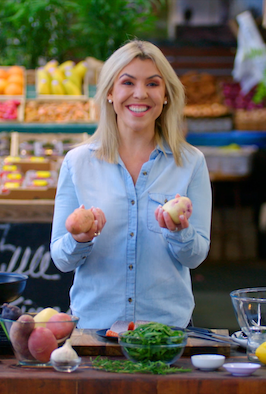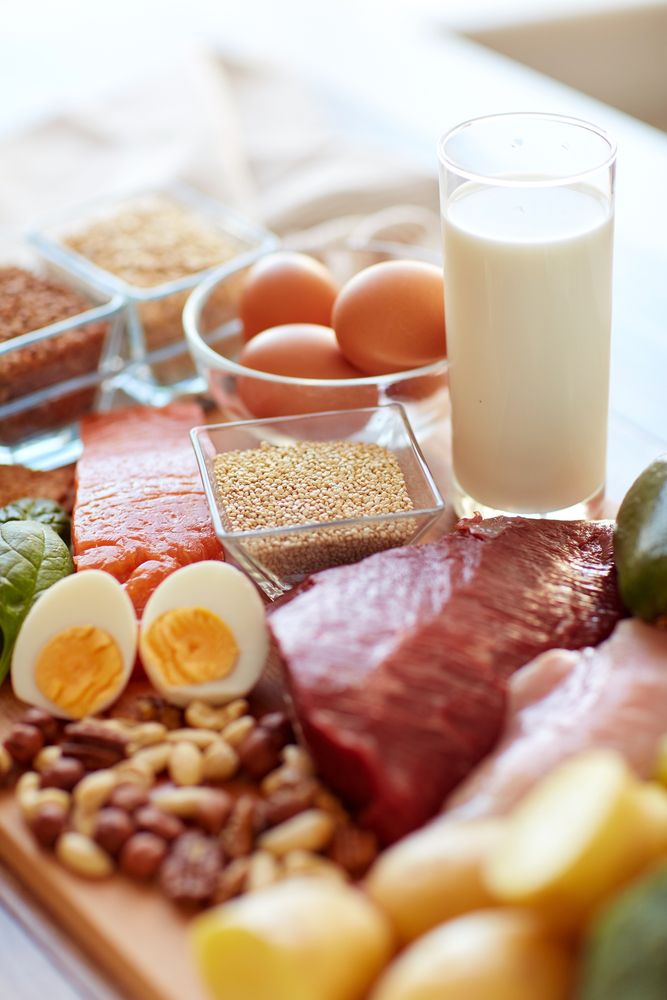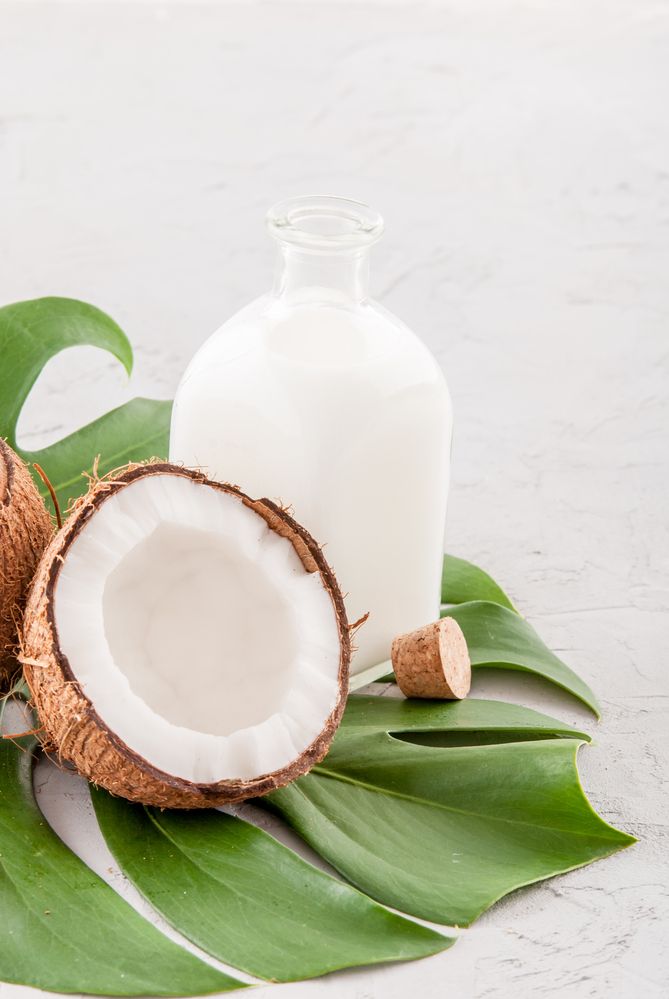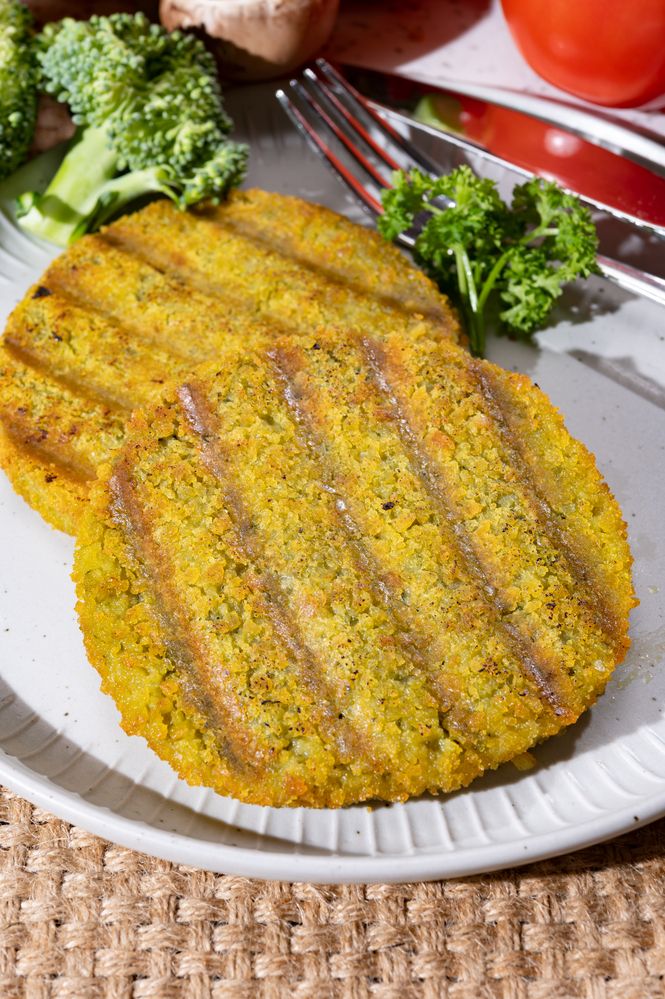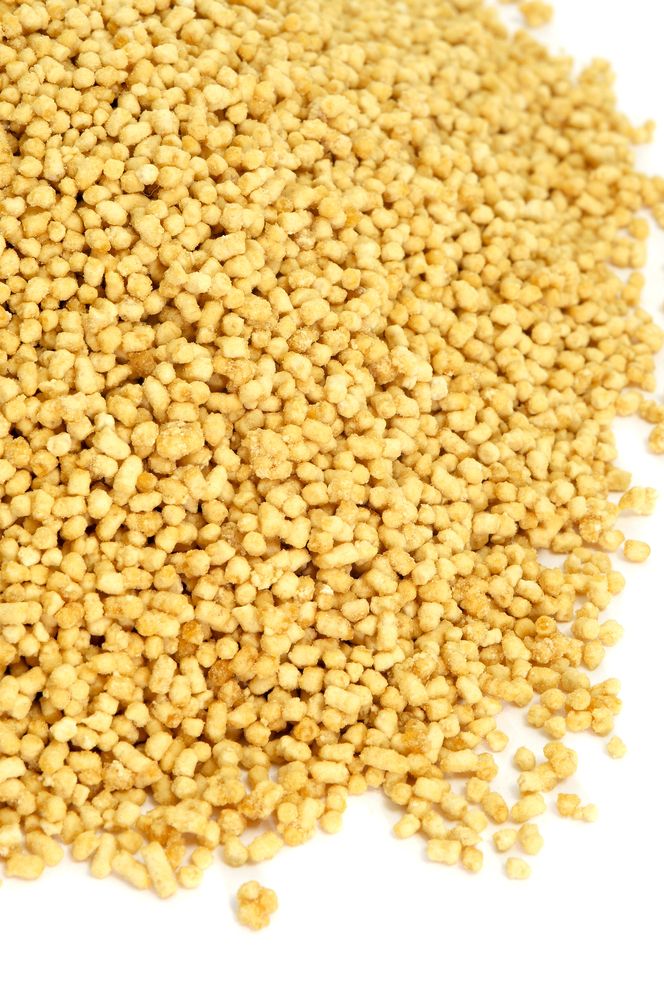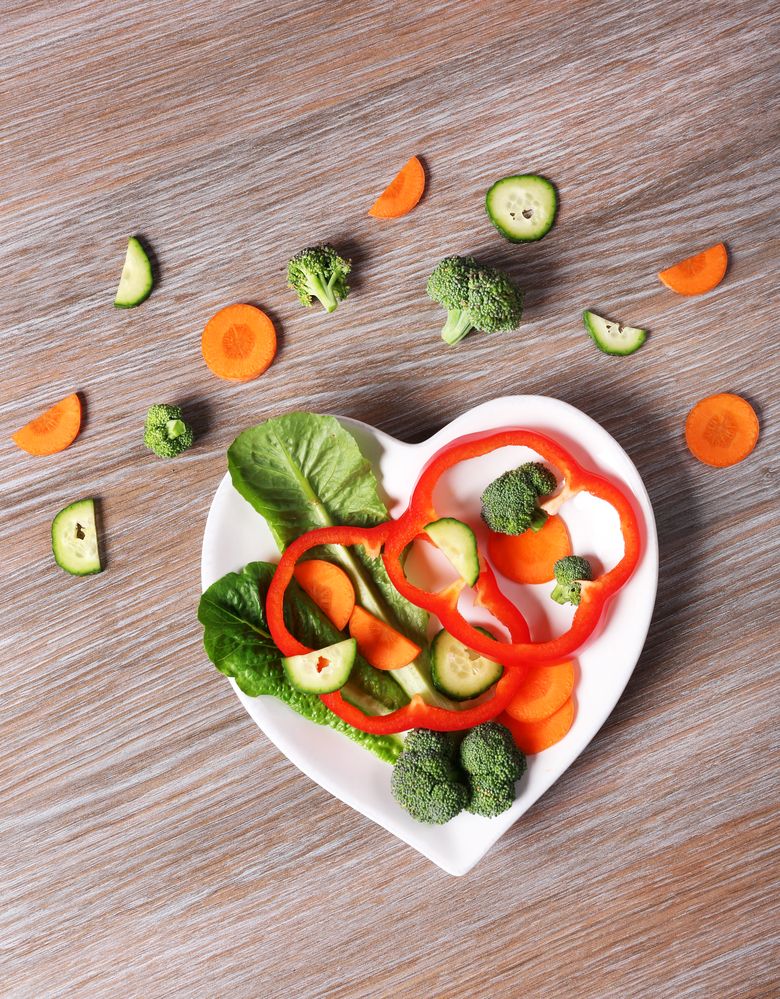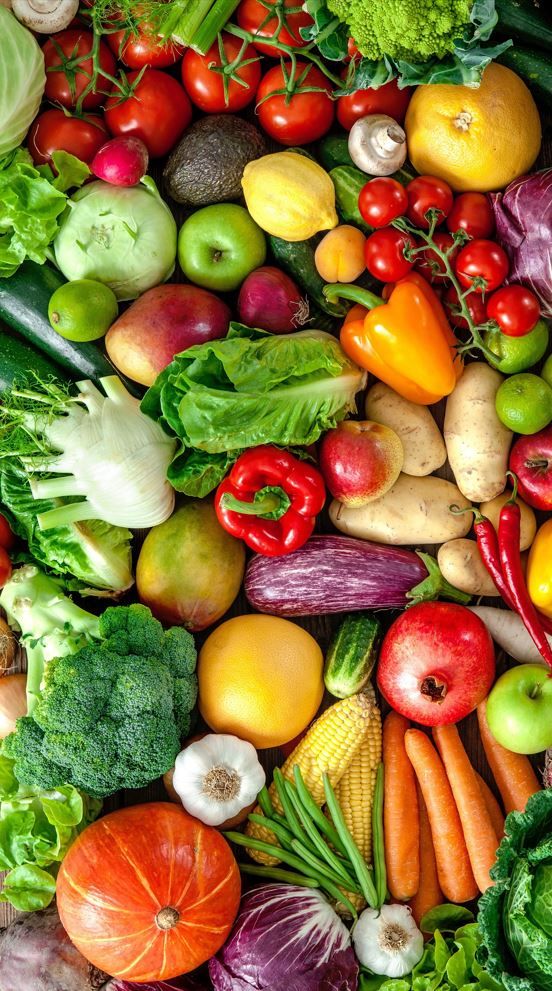Super foods - making each mouthful count
Written by Catherine Saxelby on Tuesday, 01 June 2010.

Hardly a month goes by without us reading about a new “super food” or “magic ingredient” that can prevent cancer, lower our cholesterol, boost the immune system or keep us looking young.
Evaluating the claims
Sometimes the headlines are premature; sometimes they don’t tell you the huge quantities you need to eat to see a clinical effect.
- Cranberry juice, for instance, with solid research to show that it can keep urinary tract infections at bay, requires you to drink at least 300 mL (a large glass) every day to see any benefit.
- To be free of hot flushes during those menopausal years means a commitment to soy – around 1 litre (4 cups) of soy beverage a day is what’s needed to get enough of those mighty phyto-oestrogens.
- Garlic, king of the super foods, has been shown to lower cholesterol in many - but not all studies - but the volunteers were taking in at least 4 cloves a day, or equivalent in garlic extract or powder.
What makes a food a super power?
Despite the hype, it’s clear that foods are not created equal.
Although there is no formal definition on what exactly is a superfood, here’s what I look for in deciding whether a food is ‘super’ or not. It should have one or more of these 8 qualities (mine do):
- Be rich in vitamins, minerals, omega-3 fat or fibre compared to its kilojoule/calorie count (have a high nutrient density). They stand out from the rest!
- Have 25 per cent or more of the recommended intake of two or more nutrients in a serve OR be outstanding rich in one nutrient, having 50 per cent or more of its recommended intake for the day.
- In addition to the normal nutrients, contain significant quantities of what could be regarded as health-promoting and/or protective substances such as phytonutrients or other substances not usually found in foods in its class.
- Be minimally processed without being enriched.
- Provide essential nutrients without overloading the body with salt, saturated fat, trans fat, sugar or other compounds linked to poor health.
- Have research linking it to a potential reduced risk of illness or poor health.
- Be easily available and affordable
- Have medicinal or healing qualities which have been acknowledged by traditional medicine - effects beyond nutrition (think of the folklore behind garlic or ginger).
In a nutshell, they’re nutrient-rich, natural and won’t overload you. AND they’re easy to incorporate into your daily diet.
Apples ain’t apples
A dietitian may encourage you to “eat a piece of fruit” but the choice you reach for can bring vastly differing nutrients. Put simply, an orange is not equivalent to an apple.
- An orange has 10 times more vitamin C and beta-carotene, 4 times more thiamin and a huge 40 times more folate, a B vitamin that prevents birth defects than an apple.
- Broccoli is nutritionally superior to beans, zucchini or other green veges (so are its relatives cauliflower, cabbage, kale and Brussels sprouts).
- Liver towers over red meats including kangaroo and venison.
- Garlic lords it over leeks onion, shallots and chives, even though they are all cousins.
- Dark chocolate is the one with the catechin antioxidants (the more bitter, the better). Milk chocolate has only around one-third and white chocolate - forget it!
New super powers on the food scene
Research can morph everyday foods into “healing foods” overnight. Cinnamon (3 grams a day, about half a teaspoon) has been shown to lower blood glucose in people with diabetes.
Rosemary and oregano are documented to have strong antioxidant contents along with anti-bacterial qualities which is thought to be the reason why they helped preserve meat dishes in early times before refrigeration.
Tea doesn’t have to be green to be good. A cuppa of regular tea now appears to contain the same antioxidant potential – both come from the same bush Camellia sinensis.
So how to make each kilojoule count?
Smart choices within each food group
Dr Adam Drewnowski, Director of the Centre for Public Health Nutrition at the University of Washington believes, in today’s climate of obesity concern, we should “make each kilojoule count”. Using the concept of nutrient density, he’s ranked hundreds of natural foods against the kilojoules they provide to come up with what he calls “naturally nutrient-rich foods”. “These are the power kilojoules that maximize the vitamins, minerals and protein from every kilojoule you consume,” explains Drewnowski.
His research is backed up by a classification of over 1113 foods ranked them for their total content of antioxidant compounds by a Norwegian research group. Putting these analyses together and weighing up the research from other papers over the years leads me to my master list of super foods or star foods within each food group.
Vegetables
All vegetables are a nutritionist’s delight but the superstars that turn up time and time again are spinach, members of the cruciferous family (cabbage, broccoli, Brussels sprouts), dark-green lettuces (mignonette, rocket, baby spinach leaves), avocadoes, beetroot and orange sweet potato (kumera). You get the highest quantities of vitamin C, folate, fibre, and minerals without overloading your system. Also included in this group is fresh garlic thanks to its ability to fend off bacteria and viruses, reduce cholesterol levels and thin the blood.
Grains and grain foods
Concentrated sprinkles such as wheatgerm and lecithin rank highly for B vitamins and minerals. They are an easy nutrition supplement for your breakfast.
Brans have fibre concentrated and make a handy addition to top up fibre and prevent constipation e.g. wheat bran, rice bran, oat bran and psyllium.
Dairy
Hardly surprisingly, it’s low-fat yoghurt (and milk) that gives you the most bang for your nutrition buck.
Proteins
Top of the class are pink or red salmon, lean beef steak, pork loin and eggs. Liver and kidney are concentrated in things like iron and vitamin A but have long suffered in popularity with their strong flavour.
Nuts and seeds
Almonds, walnuts, hazelnuts and peanuts rank the highest for nuts. Flaxseed and chia tick the most boxes for the seeds.
Legumes
It’s soy that shines over the other beans and peas.
Fruits
While all fruit is nutritious and variety is important, you can still notice two main types as outstanding. Go for the berries especially blueberries (but also strawberries, raspberries, blackberries and cranberries) and any of the citrus fruit (grapefruit, oranges, mandarins). Kiwi fruit come close as a contender.
Herbs and spices
Of all the foods, spices and dried herbs are the most concentrated in phytonutrients. Those that pack the most powerful punch are cloves, cinnamon, turmeric, oregano, sage, rosemary, thyme, marjoram, sage, mint, saffron and ginger. Chilli also makes this list. Just remember you need to use culinary herbs and spices in generous quantities – not just a garnish - and consume them regularly.
References quoted: ♦ Darmon N, Darmon M, Maillot M, Drewnowski A. A nutrient density standard for vegetables and fruits: Nutrients per calorie and nutrients per unit cost. J Am Diet Assoc. 2005; 105:1881-1887. ♦ LC Tapsell, I Hemphill, DR Sullivan et al. Health benefits of herbs and spices: the past, the present, the future. Medical Journal of Australia (supplement), volume 185 number 4, 21 August 2006. ♦ Bente L Halvorsen, Monica H Carlsen, Katherine M Phillips, Siv K Bøhn, Kari Holte, David R Jacobs, Jr, and Rune Blomhoff Content of redox-active compounds (ie, antioxidants) in foods consumed in the United States Am J Clin Nutr 2006 84: 95-135. ♦ Carlson MH et al. The total antioxidant content of more than 3100 foods, beverages, spices, herbs and supplements used worldwide. Nutrition Jrnl 2010;9 22 Jan.
Reviews
-
Read more
Product review: Low-sugar alcoholic ginger beer
1 March 2023 by, Catherine Saxelby
Want something to drink before dinner? Something that’s LOWER in alcohol than wine? To match his beer? Then look no further than Bundaberg’s low-sugar alcoholic ginger beer.
You can drink Bundaberg low-sugar ginger beer straight from the can, or pour it into a long glass over ice with a slice of lime.
-
Product snapshot: Berkelo’s Khorasan Macaroni
14 September 2022 by, Catherine Saxelby
I’m loving this macaroni from Berkelo. I was sent a sample for Whole Grain Week 2022 by the Grains Legume Nutrition Council. I cooked it up and found that it was just divine! Read on for more …
-
Product review: Super high-oleic safflower oil
11 May 2022 by, Catherine Saxelby
“What does super high-oleic mean?” I hear you ask. Also, “I haven’t heard of safflower for ages. What’s the deal?” Read on and all will be explained.
-
Product review: Healthy Life Food Tracker
6 April 2022 by, Catherine Saxelby
When I was first asked to write this review, I thought, Not another tracker.
After all, there have been several in recent years, such as My Fitness Pal and Everyday Diet Diary. But this one is different. It works by using your Everyday Rewards card AND your shop at Woolworths.
-
20 October 2021 by, Catherine Saxelby
With home delivery on the rise, this post is reviewing none other than that stalwart Lite n’ Easy. We all know their meals are good for weight loss (which we all need after COVID-19!), but did you know they’re also good for general health and wellbeing ? Eating well to nourish yourself – putting your mental health and wellbeing at the forefront – is gaining momentum. Lite n’ Easy meals also ensures you satisfy your need for vitamins, minerals, fibre and phyto-compounds, such as sterols and carotenoids.
 This post has been sponsored by Lite n' Easy.
This post has been sponsored by Lite n' Easy. -
Product review: Birds Eye Plant Based range
15 September 2021 by, Catherine Saxelby
When you think of Birds Eye, their frozen peas and fish fingers probably come to mind. But I bet you’d never think of plant-based products!
 This post has been sponsored by Birds Eye.
This post has been sponsored by Birds Eye. -
Product Snapshot: Olina’s Snackers Crackers
2 June 2021 by, Catherine Saxelby
We sampled Olina’s latest offering in the seeded cracker range – called Olina’s Bakehouse Seriously Seedy Snackers (which is a great name BTW). They come in four flavours: Barbecue, Chilli & Lime, Beetroot & Sour Cream, and Balsamic Vinegar & Caramelised Onion. Take a look at our verdict.
Healthy Weight Loss
-
Read more
Intermittent fasting vs daily calorie restriction
3 May 2023 by, Catherine Saxelby
As you probably know already, intermittent fasting (IF) has gained favour as an alternative regimen to daily caloric restriction (DCR). Fasting is shown to extend the lifespan of rats, and has been associated with metabolic benefits in humans, yet the results so far have been inconsistent. So, which regimen is best for healthy weight loss?
-
15 March 2023 by, Catherine Saxelby
What sort of a diet should you follow to lose that excess weight? These days, it’s pretty confusing with high-protein Keto advocates clashing with plant-protein followers … as well as intermittent fasters, juice-only dieters, no-carb dieters and no-animal (aka plant-based) dieters. Plus all the ads for anti-hunger supplements, meal-replacement shakes and home-delivered meals, more of which somehow appear every day. So, what sort of diet should YOU follow to lose that excess?
-
Protein shakes for weight loss
9 November 2022 by, Catherine Saxelby
These days, protein shakes aren’t bought by just body builders – they’re so popular that you can readily buy a 400 g tub at your local supermarket or service station. And with tempting claims such as ‘Facilitates muscle toning’, ‘Contains transformation-making protein’ and ‘Tastes incredible, mixes easily’, why wouldn’t you grab one? But protein shakes aren’t the magic answer to all your weight-loss woes. Let’s take a look at what you get for your money.
Guest post by dietitian Zoe Wilson APD
-
20 January 2021 by, Catherine Saxelby
Many of us have cravings from time to time and for different reasons. One thing is certain, they can sabotage all your best efforts at a healthy diet and/or weight loss. The good news? You CAN beat them. I’ll tell you how.
-
How to lose weight WITHOUT going on a diet
14 October 2020 by, Catherine Saxelby
The word 'diet' is a turn-off for most people. It sounds hard, unpleasant and unpalatable. Losing weight doesn’t have to be hard AND it doesn’t have mean sticking to a 'diet'. You can forget Paleo, Keto, Vegan and Raw, Gluten-free and Intermittent Fasting. To lose weight, you don’t have to follow any specific diet. What you need is simple, healthy, nutritious food and a few tips and tricks.
-
What IS a healthy balanced diet for weight loss?
16 September 2020 by, Catherine Saxelby
Healthy weight loss happens when you lose weight slowly and steadily (around 1 kg or 2 pounds weight loss a week). Your goal is to lose weight while still getting your essential nutrients but from smaller portions. You certainly don’t want to be tired with no energy! That’s why you need regular healthy meals and snacks on hand to ensure your vitamins, minerals, omega-3s and fibre needs can be easily met. There is a new range of healthy weight loss meals available and it’s one that I’d like to recommend. With these ready meals, you’ll say goodbye to meal planning, shopping, meal preparation and cooking.
This post is sponsored by Chefgood
-
Kitchen make-over for the New Year
8 January 2020 by, Catherine Saxelby
“This year, I'm going to lose weight!”, or “This year I’m opting for a healthier lifestyle!” Is your 2020 New Year's resolution something like one of these? If so, how is it going to happen?
Most popular
-
Read more
Q. What's the difference between Diet Coke and Coke Zero?
12 September 2013 by, Catherine Saxelby
A. At first glance, Diet Coke and Coke Zero appear to be identical. Both contain no kilojoules (Calories) and no sugar. Both are artificially sweetened with (the same amount) of aspartame and acesulfame K and therefore have the same ‘sweetness’.
-
How to convert sodium to salt (and salt to sodium)
6 August 2010 by, Catherine Saxelby
As a nutritionist, my aim is to help busy women eat healthily. One of the ways to do this is to follow the general nutrition advice to reduce the salt in your diet. So, how can you do this when what you’ll see on a food label and on any recommended daily intakes is sodium?
-
7 types of sugar - which is healthier?
11 December 2013 by, Catherine Saxelby
Last week on the radio, the announcer asked me if there was a 'good' sugar – one that would satisfy her sweet tooth but that was 'healthier' than regular white sugar. She figured if there were 'good' carbs and 'bad' carbs there must be some sugars that would get the nod of approval from nutritionists.
-
Eat to beat gastro and diarrhoea
12 October 2012 by, Catherine Saxelby
A clear fluid diet is the best form of treatment for gastro and tummy upsets. It is the "lightest" type of diet, designed to place as little strain as possible on the digestive tract. It is NOT nutritionally adequate and should be followed only for a strictly limited time e.g. two or three days but no more than a week.
-
Nutella. The full (correct) list of ingredients
12 April 2011 by, Catherine Saxelby
Have you ever tried to find the exact list of ingredients for Nutella online? The identical one that appears on its label - in descending order from the first (largest ingredient by weight) to the last ingredient, as required by law? Well, you won’t find it! Here’s the hoop-la I went through to discover exactly what the ingredients in Nutella are and why Nutella is not good for your kids.
-
Sugar - why quitting sugar guarantees you'll lose weight
6 May 2013 by, Catherine Saxelby
Sugar. It's been labelled "deadly", "addictive", "toxic", "sweet poison" and blamed for the rise in global obesity in recent years." Get rid of the white toxin from your diet and you'll free up your body to drop those excess kilos" (or so say anti-sugar campaigners Sarah Wilson, David Gillespie and Robert Lustig). Here are the three real reasons why I believe quitting sugar helps you lose weight.
-
What does 8,700 kilojoules look like?
14 August 2012 by, Catherine Saxelby
8,700 is a magic number in nutrition. It’s the number of kilojoules (kJ) that is the “average” intake for adults in Australia, if the surveys are correct.
It’s widely used as a benchmark figure and as the basis of food labels such as the Percent Daily Intake values.
Recently kilojoules have appeared on fast food menu boards and they use 8,700 as the yardstick to assess their foods against. Here's my take on it.
Recipes
-
Read more
24 May 2023 by, Catherine Saxelby
This is a kind of pavlova topped with fruit, but the base is made from ricotta, rather than egg whites and sugar.
-
22 March 2023 by, Catherine Saxelby
This is an Asian-influenced salad that’s perfect to serve as a side salad at a BBQ or with a fillet of fish.
-
14 December 2022 by, Guest Post
This banana loaf is half bread and half cake. Hence I've called it "cread" which is halfway! It’s dense and delicious without being super-sweet or oily. It can be enjoyed fresh, toasted or sliced and frozen into portions to enjoy later.
-
23 November 2022 by, Guest Post
This quick and easy dessert is ready in minutes. And there are NO leftovers to tempt you later!
-
19 October 2022 by, Catherine Saxelby
A quick and easily-made sandwich, it’s great for an easy lunch.
-
Spring Vegetable Pesto Pasta Salad
7 September 2022 by, Guest post
This super salad-in-one gives you pasta plus vegetables all together. It has a spring feel to it.
-
Squash-ed spaghetti bolognaise
3 August 2022 by, Guest post
This is an excellent make-and-freeze recipe, so weeknight meals become more manageable. I know of no better way of ‘hiding’ veggies than in a Bol sauce – somehow mince with a few veggies like pumpkin or zucchini is a match-made-in-heaven.
Foodwatch
The Good Stuff
The Boring Stuff
© 2025 Foodwatch Australia. All rights reserved
Website by Joomstore eCommerce
